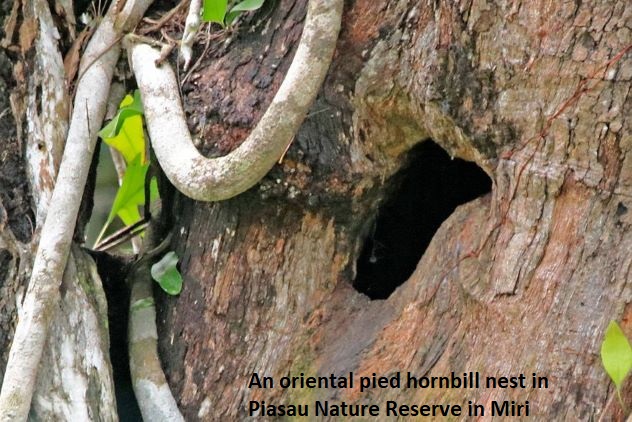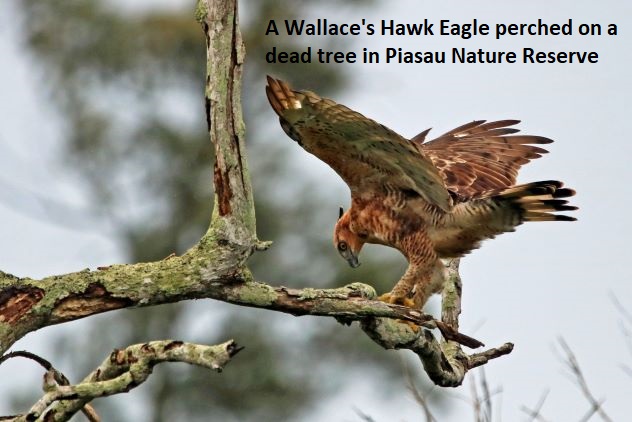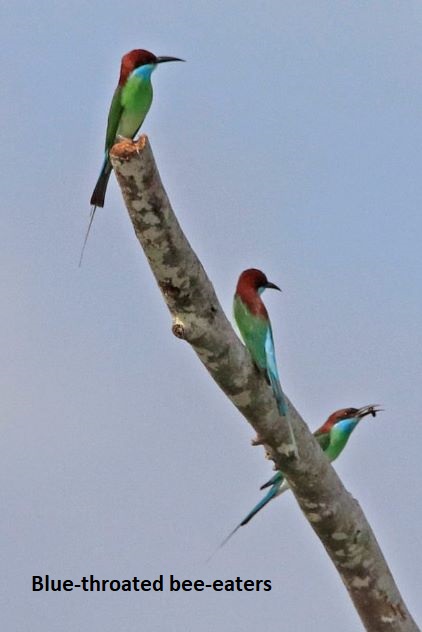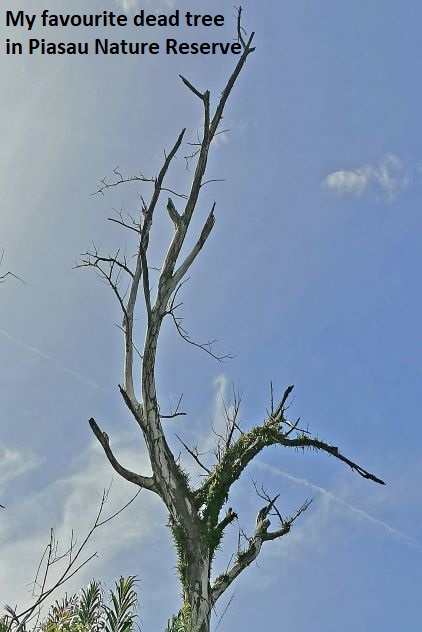I see many dead trees all around Miri and I used to wonder why they are not cut down. But now I know why.
Standing dead and dying trees are called “snags.” Such trees occur as a result of disease, lightning, fire, animal damage, too much shade, drought, root competition, as well as old age. Many dead trees remain standing without posing a threat to safety.
While dead trees may be an eyesore to some, they provide vital habitat for a lot of species of wildlife. Wildlife species use nearly every part of a dead tree in every stage of its decay for many things.
Hollow cavities and crevises on dead trees are often used as a nesting place by wildlife such as birds, squirrels and raccoons. The best examples are the oriental pied hornbills in Piasau Nature Reservers using hollow cavities as their nests.
In some of my bird photography outings to Kuala Baram Wetlands and Piasau Nature Reserve, I have noticed that raptors like to use the higher branches of snags as a look-out for spotting potential preys as their views are not obstructed by leaves or other foliage. I have also seen blue-throated bee-eaters using these perches to launch their aerial attacks. My favourite dead tree is the one in Piasau Nature Reserve not far from the Piasau Boat Club. There was one ocassion when I encountered three different types of raptors perched on the branches of the tree.
The nooks and crannies of deadwood are ideal for squirrels and other wildlife to store their food. I have seen these in several parts of Miri, including Piasau Nature Reserve, Bulatan Park and Kuala Baram Wetlands.
Some deadwood attract insects, mosses, fungi and lichens. They provide a gourmet restaurant for wildlife looking for some snacks. Many woodpeckers not only nest in cavitites excavated in snags or dead parts of living trees but they also drill the trees for food. The most common woodpeckers that I have come across doing these are the brown-capped woodpeckers.
I learn all these due to my keen interest in bird and other wildlife photography. For those of you thinking about taking a plunge into wildlife photography, I encourage you to just do it!
 CY@CY Says Welcome to my dreamscape. Where a Lim is also a Ling.
CY@CY Says Welcome to my dreamscape. Where a Lim is also a Ling.




